The pupillary light response as a physiological index of aphantasia, sensory and phenomenological imagery strength
- PMID: 35356890
- PMCID: PMC9018072
- DOI: 10.7554/eLife.72484
The pupillary light response as a physiological index of aphantasia, sensory and phenomenological imagery strength
Abstract
The pupillary light response is an important automatic physiological response which optimizes light reaching the retina. Recent work has shown that the pupil also adjusts in response to illusory brightness and a range of cognitive functions, however, it remains unclear what exactly drives these endogenous changes. Here, we show that the imagery pupillary light response correlates with objective measures of sensory imagery strength. Further, the trial-by-trial phenomenological vividness of visual imagery is tracked by the imagery pupillary light response. We also demonstrated that a group of individuals without visual imagery (aphantasia) do not show any significant evidence of an imagery pupillary light response, however they do show perceptual pupil light responses and pupil dilation with larger cognitive load. Our results provide evidence that the pupillary light response indexes the sensory strength of visual imagery. This work also provides the first physiological validation of aphantasia.
Keywords: aphantasia; human; imagery; individual differences; neuroscience; pupillometry; visual imagery.
© 2022, Kay et al.
Conflict of interest statement
LK, RK, TA, JP No competing interests declared
Figures
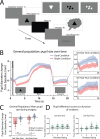
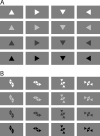



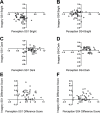

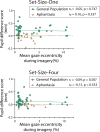

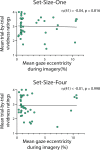


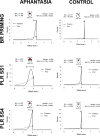






Similar articles
-
Revisiting the blind mind: Still no evidence for sensory visual imagery in individuals with aphantasia.Neurosci Res. 2024 Apr;201:27-30. doi: 10.1016/j.neures.2024.01.008. Epub 2024 Feb 2. Neurosci Res. 2024. PMID: 38311033
-
The blind mind: No sensory visual imagery in aphantasia.Cortex. 2018 Aug;105:53-60. doi: 10.1016/j.cortex.2017.10.012. Epub 2017 Oct 28. Cortex. 2018. PMID: 29175093
-
Probing the unimaginable: The impact of aphantasia on distinct domains of visual mental imagery and visual perception.Cortex. 2023 Sep;166:338-347. doi: 10.1016/j.cortex.2023.06.003. Epub 2023 Jul 5. Cortex. 2023. PMID: 37481856
-
Defining and 'diagnosing' aphantasia: Condition or individual difference?Cortex. 2023 Dec;169:220-234. doi: 10.1016/j.cortex.2023.09.004. Epub 2023 Sep 29. Cortex. 2023. PMID: 37948876 Review.
-
The human imagination: the cognitive neuroscience of visual mental imagery.Nat Rev Neurosci. 2019 Oct;20(10):624-634. doi: 10.1038/s41583-019-0202-9. Nat Rev Neurosci. 2019. PMID: 31384033 Review.
Cited by
-
Predicting the subjective intensity of imagined experiences from electrophysiological measures of oscillatory brain activity.Sci Rep. 2024 Jan 8;14(1):836. doi: 10.1038/s41598-023-50760-7. Sci Rep. 2024. PMID: 38191506 Free PMC article.
-
Hippocampal-occipital connectivity reflects autobiographical memory deficits in aphantasia.Elife. 2024 Sep 26;13:RP94916. doi: 10.7554/eLife.94916. Elife. 2024. PMID: 39325034 Free PMC article.
-
Sustained neural representations of personally familiar people and places during cued recall.Cortex. 2023 Jan;158:71-82. doi: 10.1016/j.cortex.2022.08.014. Epub 2022 Oct 21. Cortex. 2023. PMID: 36459788 Free PMC article.
-
Visual imagery vividness correlates with afterimage conscious perception.bioRxiv [Preprint]. 2024 Apr 4:2023.12.07.570716. doi: 10.1101/2023.12.07.570716. bioRxiv. 2024. Update in: Neurosci Conscious. 2024 Aug 01;2024(1):niae032. doi: 10.1093/nc/niae032. PMID: 38168380 Free PMC article. Updated. Preprint.
-
Neural and behavioral reinstatement jointly reflect retrieval of narrative events.Nat Commun. 2025 Aug 23;16(1):7865. doi: 10.1038/s41467-025-62375-9. Nat Commun. 2025. PMID: 40849412 Free PMC article.
References
-
- Akgul F. ZeroMQ: Use ZeroMQ and Learn How to Apply Different Message Patterns. Packt Publishing; 2013.
Publication types
MeSH terms
LinkOut - more resources
Full Text Sources

